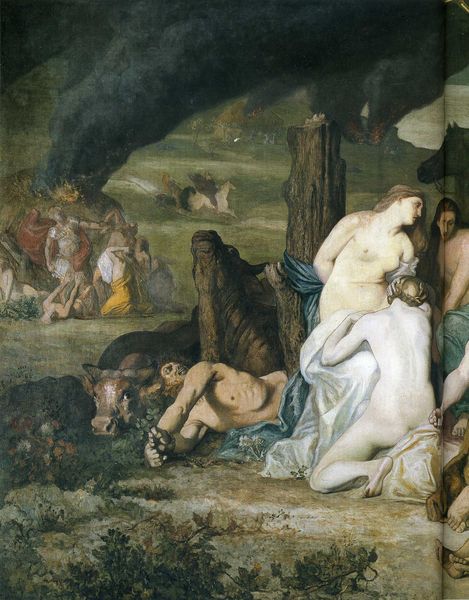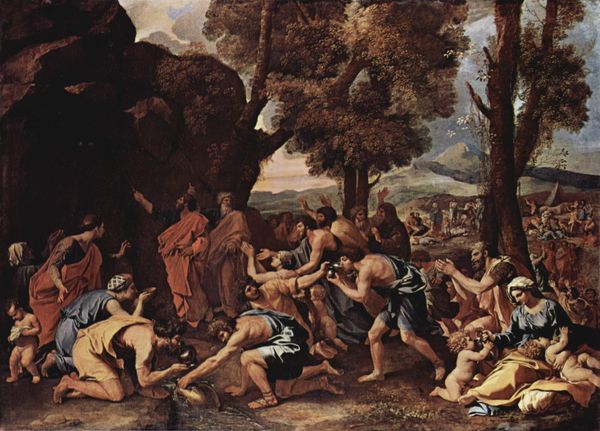
Copyright: Public domain
Curator: This is Evelyn De Morgan's "By the Waters of Babylon," completed in 1883 using oil paint. It visualizes a moment of exile and lament. Editor: Oh, it's just soaked in sorrow, isn't it? Like someone wrung all the joy out of a perfectly good dishrag. The muted colours and those figures huddled together, so clearly distressed—it's heartbreaking. Curator: Indeed. De Morgan’s material choices emphasize this. Oil allows for rich colour saturation. Notice how she modulates tones within the earth tones to build mood. It echoes Pre-Raphaelite concerns, favoring depictions of scenes with intense historical context or literary reference. She engages with the materiality of sorrow itself, reflecting themes common among female Pre-Raphaelite artists who often turned to the representation of melancholic, historical narratives as sites for thinking through women's roles within Victorian Society. Editor: It feels like a tableau vivant. A staged moment but with incredibly raw emotion bubbling to the surface. You've got broken harps littering the foreground, a symbol, right, of silenced music and profound loss? The robes are such lovely deep colours - almost jewel-like- they provide the scene with richness amidst desolation and it feels so symbolic of mourning to me. Curator: Yes, the harps reference Psalm 137 where the exiled Israelites refuse to sing or play their instruments while captive in Babylon. Consider the Victorian context too. De Morgan's technique of layering thin glazes of paint would have required skilled labor in producing and distributing materials. This artistic labor becomes meaningful when we read this lament of displacement as her critique of societal constrictions on marginalized communities, made material through this careful attention to process. Editor: What moves me most is the communal aspect of grief represented in the work, bodies leaning against each other and embracing, their heads resting softly against a neighbour's shoulders - the old man there in the center, just sitting with the group but removed because age makes his burden different than theirs. You almost hear a gentle sob coming out of the painting - like their voices all gathered in a sympathetic resonance. I mean, can we even truly 'own' grief? Or is it a shared experience. Curator: It's a somber note, a deep dive into collective experience materialized beautifully, that gives us insights into her society's anxieties. Editor: Absolutely, leaving me thinking about who has been displaced from history and from its material wealth as a kind of sorrowing process.
Comments
No comments
Be the first to comment and join the conversation on the ultimate creative platform.













